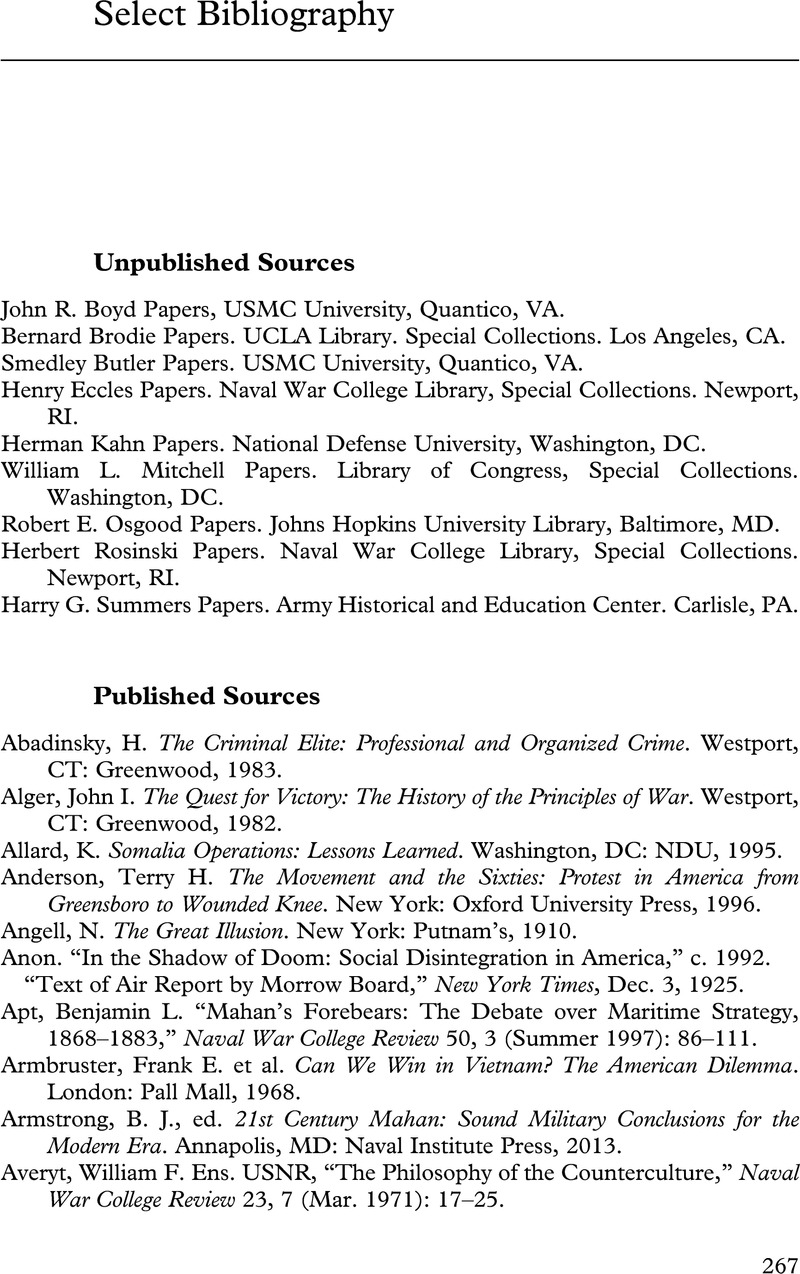Book contents
- War’s Logic
- Cambridge Military Histories
- War’s Logic
- Copyright page
- Dedication
- Contents
- Acknowledgments
- Introduction
- Part I First Principles and Modern War
- Part II The Revolt of the Strategy Intellectuals
- Part III The Counterrevolution of the Military Intellectuals
- Part IV The Insurrection of the Operational Artists
- Conclusion
- Notes
- Select Bibliography
- Index
- References
Select Bibliography
Published online by Cambridge University Press: 05 February 2021
- War’s Logic
- Cambridge Military Histories
- War’s Logic
- Copyright page
- Dedication
- Contents
- Acknowledgments
- Introduction
- Part I First Principles and Modern War
- Part II The Revolt of the Strategy Intellectuals
- Part III The Counterrevolution of the Military Intellectuals
- Part IV The Insurrection of the Operational Artists
- Conclusion
- Notes
- Select Bibliography
- Index
- References
Summary

- Type
- Chapter
- Information
- War's LogicStrategic Thought and the American Way of War, pp. 267 - 293Publisher: Cambridge University PressPrint publication year: 2021

